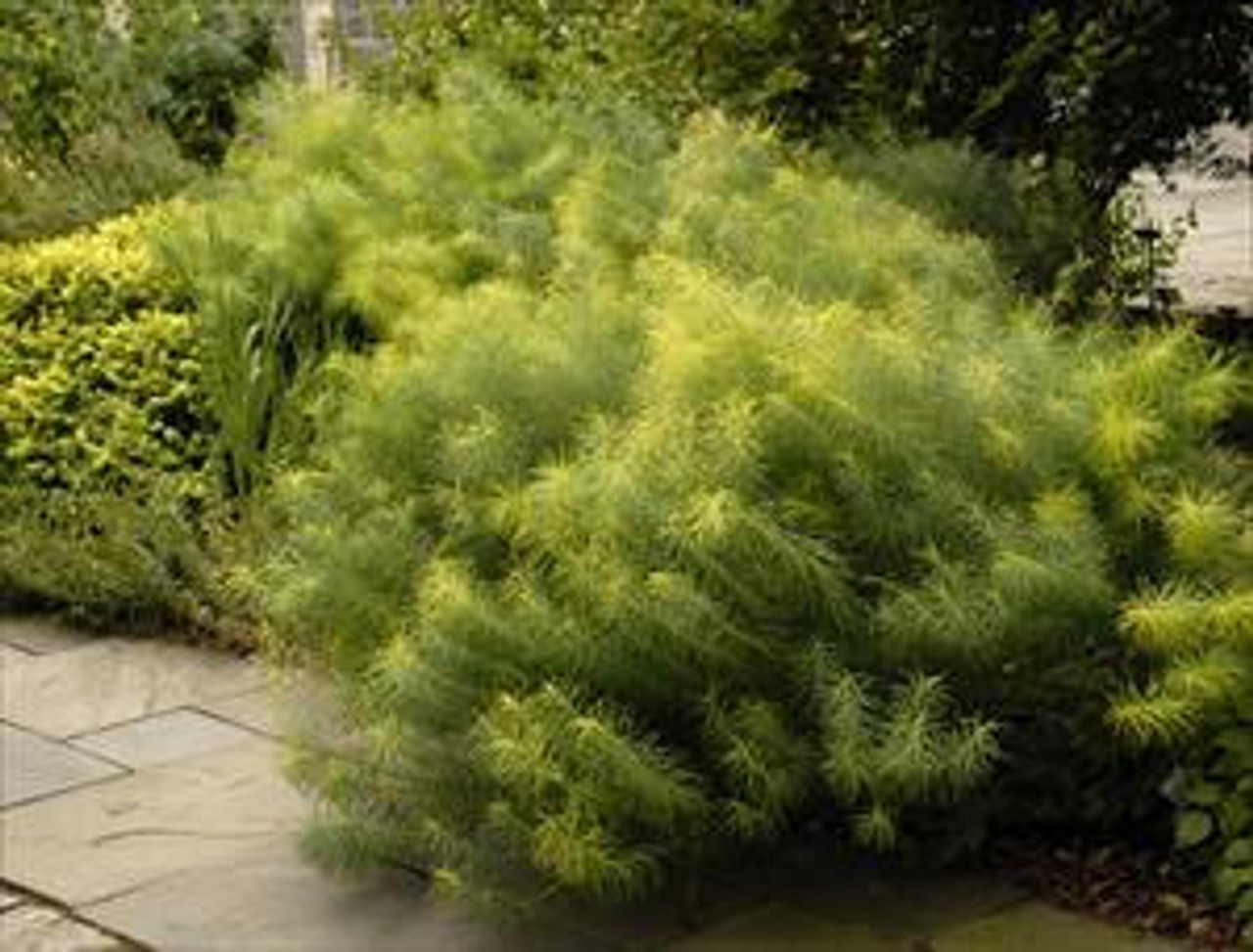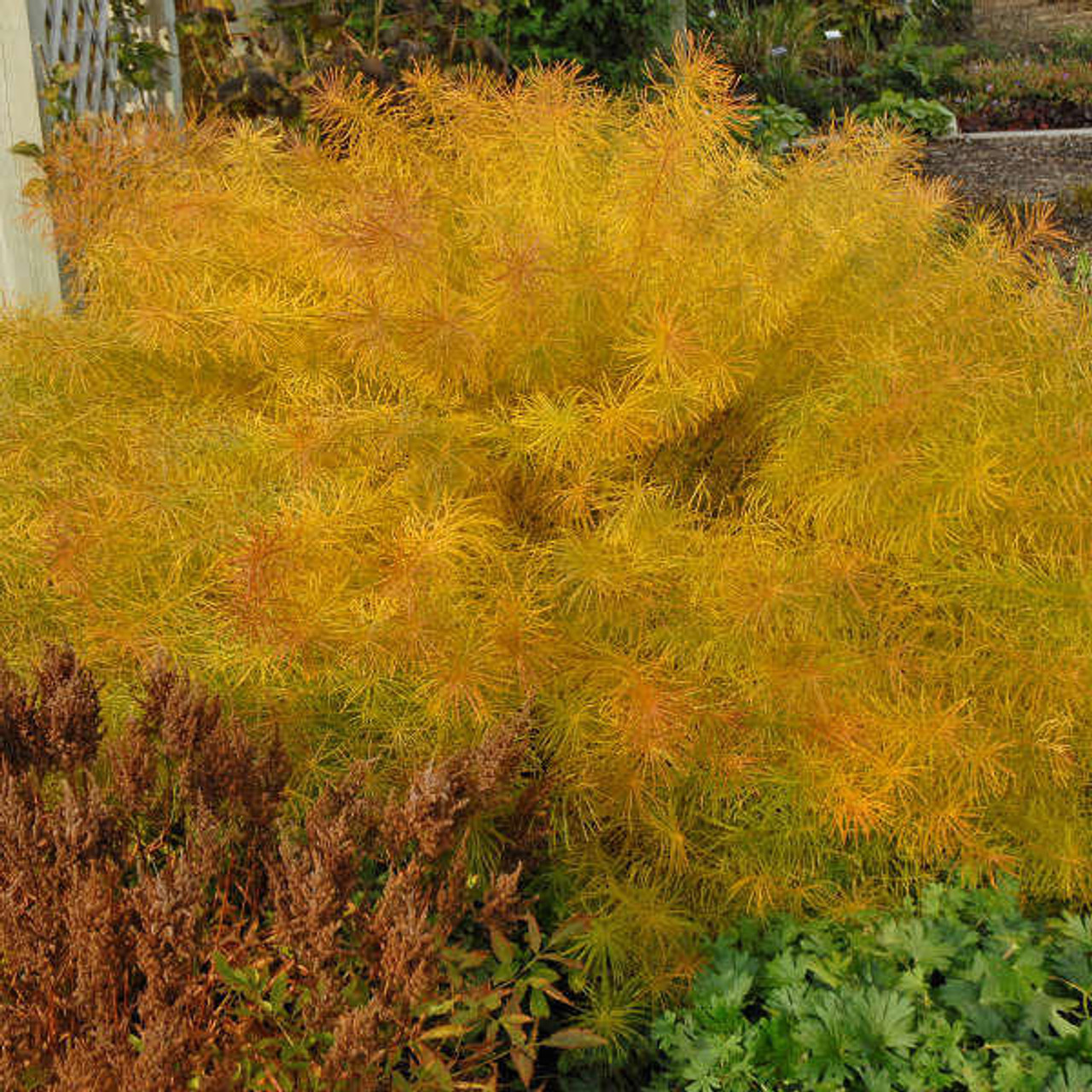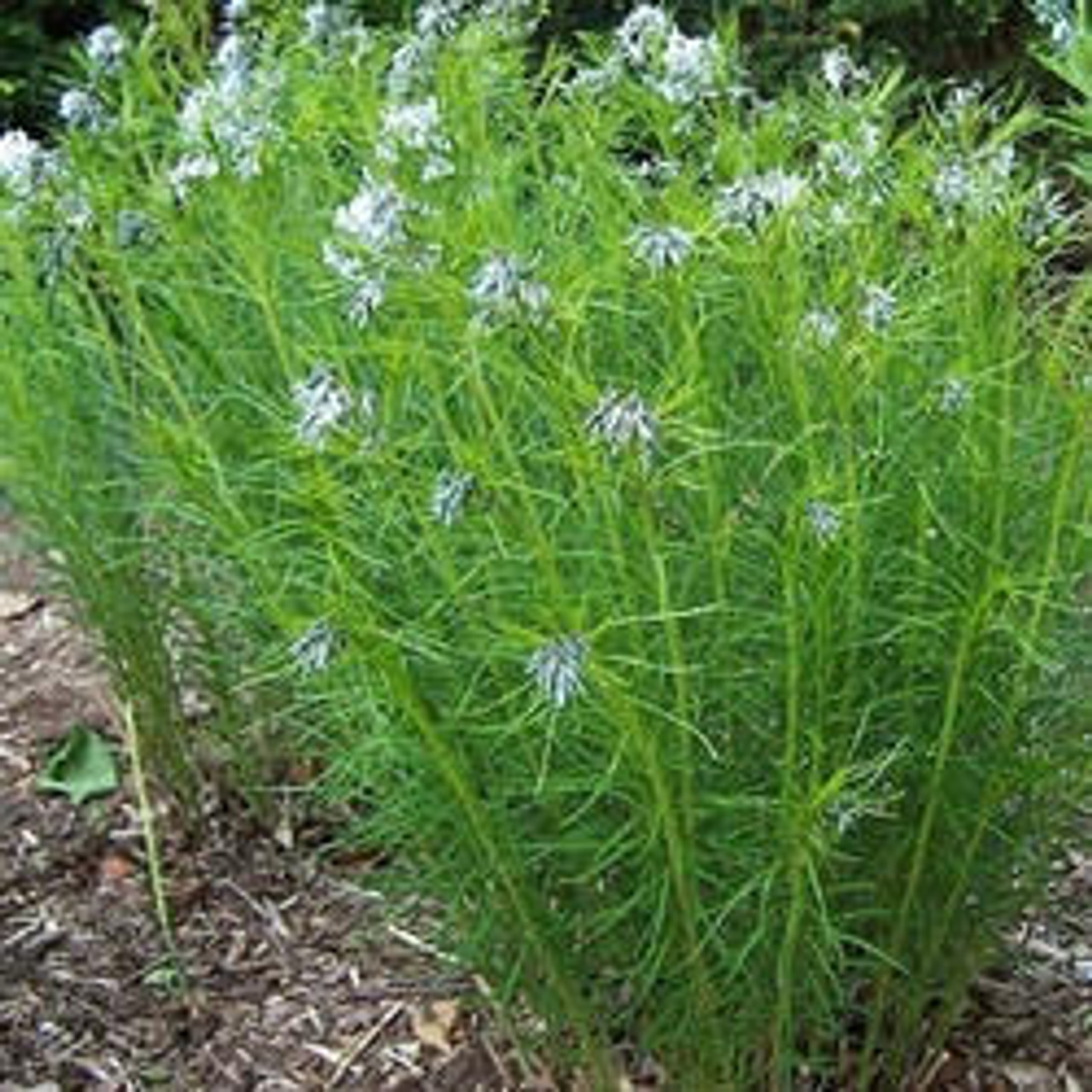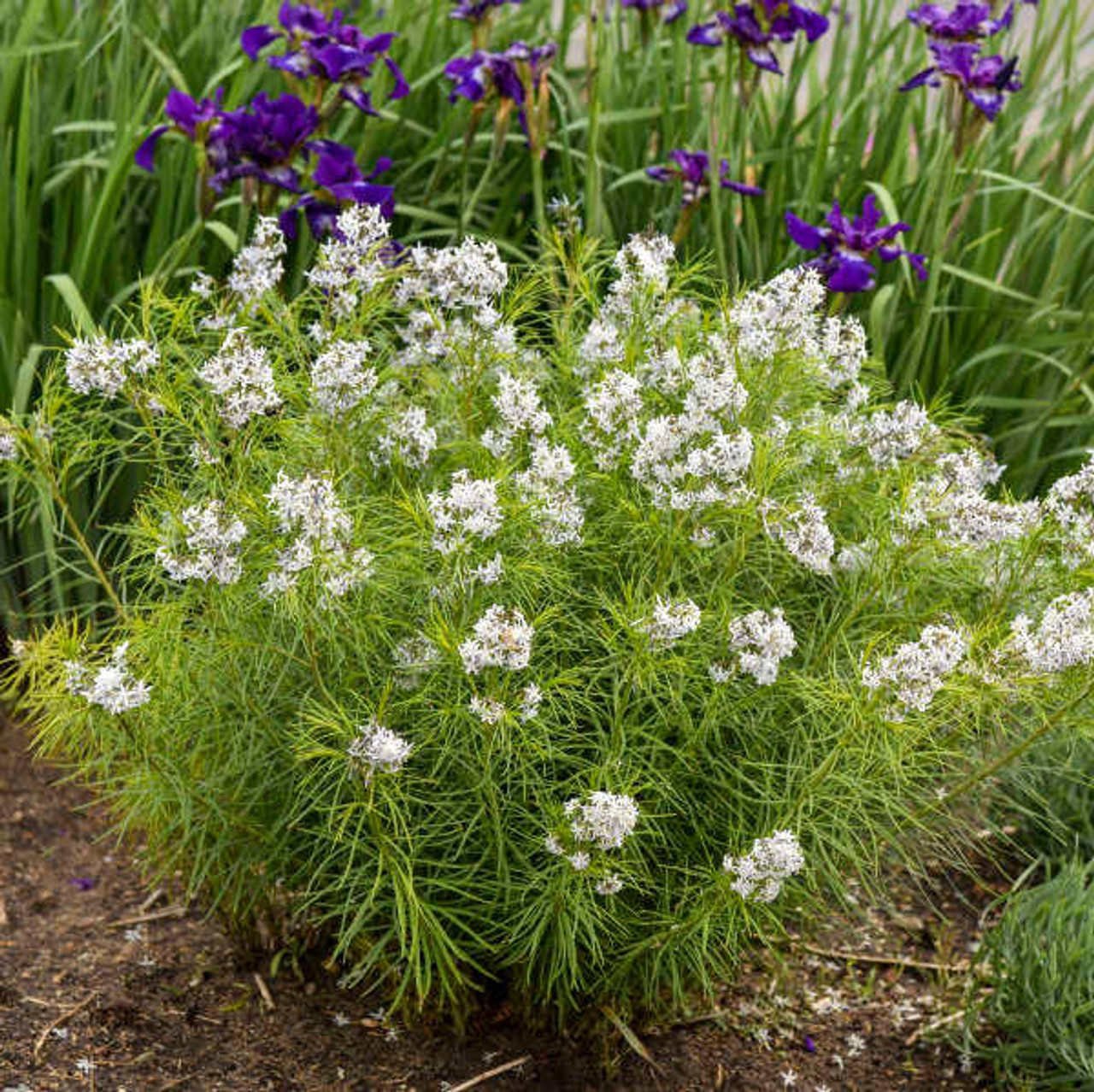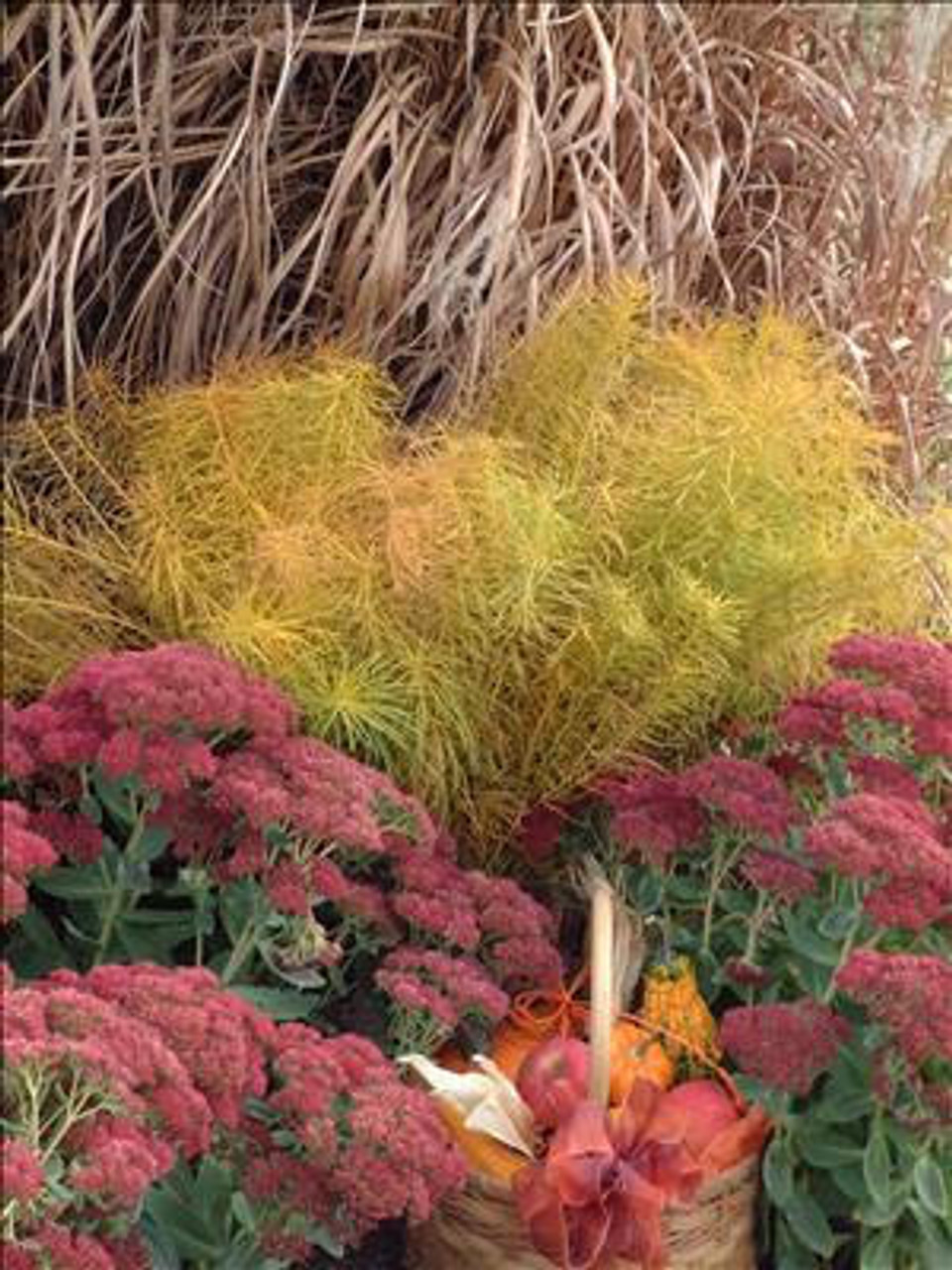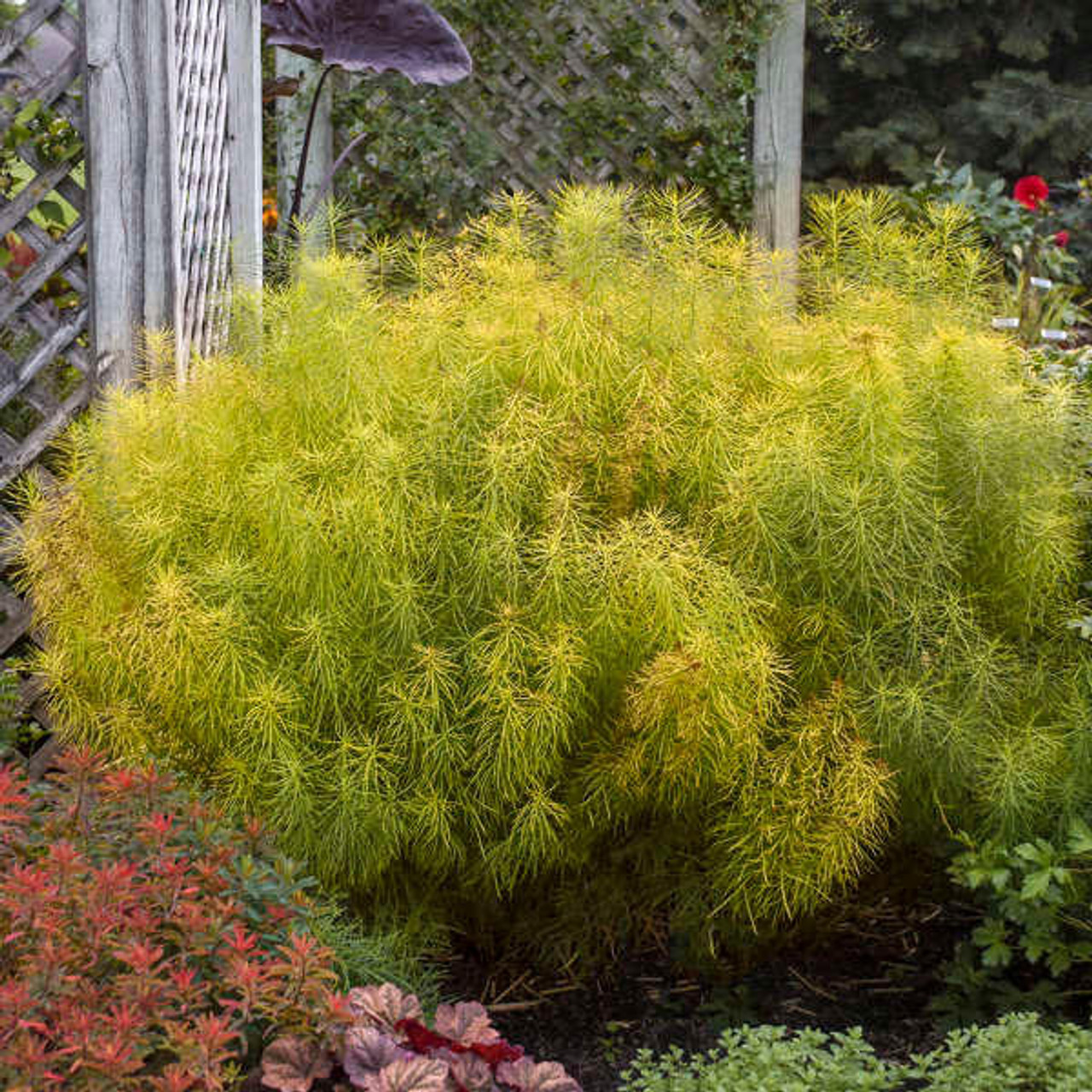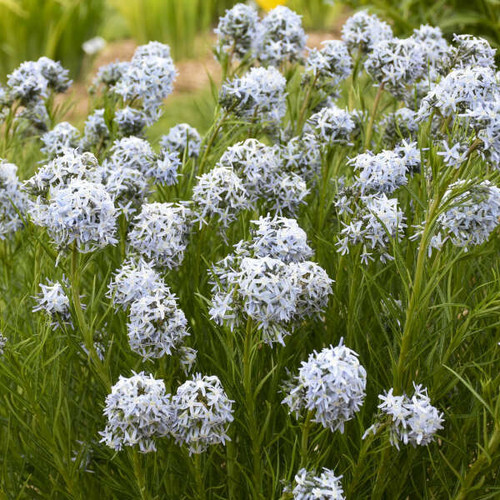Product Description
Amsonia hubrichtii (25) Bare Root Plants
Common Name: Blue Star, Arkansas Amsonia
This southern native has very narrow, needle-like leaves that line the stems like bottle brushes. Surprisingly, they are soft as silk to the touch. From late spring thru early summer, 2-3" wide clusters of small, light blue, star-shaped flowers are borne above the short mound of ferny foliage. After blooming, it quickly grows to reach a height of about 3 feet.
Amsonia adds a billowy, finely textured element to the landscape. It grows into a dense mass, much like a small shrub. The cool blue flowers can be useful in toning down adjacent flower colors.
The most valuable feature of A. hubrichtii is its fall color; the entire plant turns a stunning shade of golden yellow. It makes an excellent backdrop for fall-blooming perennials such as sedums and garden mums.
Amsonia thrives in most gardens with little care. It is low-maintenance, easy to grow and trouble-free. Plant it in full sun or partial shade and moist soil of average fertility. If grown in too much shade or very rich soil, its habit will be open and floppy. This plant grows fairly large but it will not need to be divided for many years. Cutting the stems back to within 6-8" of the ground after flowering will result in fuller growth.
Amsonia hubrichtii is native to fields and meadows in the midwest. It can be found growing naturally in Arkansas, Oklahoma, and Missouri.
Missouri Botanical Garden Emeritus Plants of Merit
Pennsylvania Horticultural Society Gold Medal Plant -- 2014
2011 Perennial Plant of the Year
Height: 3.0 Feet
Spread: 3.0 Feet
Hardiness Zones: 4,5,6,7,8,9
Flower Color: Blue shades
Foliage Color: Green shades
Full Sun (> 6 hrs. Direct Sun) - Part Shade (4-6 hrs. Direct Sun)
Average to Consistent Water Needs
Poor to Average Soil Quality
Bloomtime: Late Spring - Early Summer
Deer Resistant
Seasonal Interest: Fall Color
Growth Rate: Rapid
Border Plant, Cut Foliage, Easy To Grow, Mass Planting, Specimen, Focal Point, Native to North America
Amsonia hubrichtii, commonly known as Arkansas blue star or threadleaf blue star, is a low-maintenance perennial that adds a touch of delicate beauty to any garden. Discovered in the early 1940s by Leslie Hubricht , this North American native is admired for its soft, feathery foliage, pale blue star-shaped flowers , and vibrant golden-yellow fall color.
Amsonia hubrichtii typically grows 2 to 3 feet tall and wide, forming an upright, clumping mound of foliage . It may be slow-growing, especially in the first couple of years, but its beauty is well worth the wait . The leaves are narrow, needle-like, and incredibly soft to the touch, giving the plant a fine, feathery texture . This unique texture makes it a wonderful contrast to bolder-leaved plants in the garden. In late spring to early summer, loose clusters of pale blue, star-shaped flowers bloom on upright stems . The flowers are followed by slender, elongated seed pods . One of the most striking features of Amsonia hubrichtii is its fall foliage, which transforms into a brilliant, long-lasting golden-yellow color, providing late-season interest.
Care Requirements Amsonia hubrichtii thrives in a variety of conditions, making it an excellent choice for both novice and experienced gardeners. While it prefers full sun, it can tolerate part shade, especially in hot climates.
- Planting When planting Amsonia hubrichtii, choose a location with well-drained soil and full sun to part shade . It is tolerant of black walnut . Space plants 2 to 3 feet apart to allow for their mature size . Amend the soil with organic matter to improve drainage and fertility . Water regularly during the first growing season to establish a strong root system.
- Watering Once established, Amsonia hubrichtii is quite drought-tolerant thanks to its deep taproot system . However, it will flourish with regular watering, especially during hot, dry periods . Water deeply and infrequently, allowing the soil to dry out slightly between waterings.
- Fertilizing Amsonia hubrichtii generally does not require heavy fertilization . A light application of a balanced, slow-release fertilizer in early spring is usually sufficient . Alternatively, you can mulch around the base of the plant with compost to provide nutrients.
- Pruning To maintain a neat appearance and prevent flopping, you can cut back Amsonia hubrichtii by about one-third after flowering . This will also encourage bushier growth . In late winter or early spring, cut back the dormant stems to the ground . When pruning, be mindful of the plant's milky sap, as it may cause skin irritation to some people.
- Dividing Amsonia hubrichtii does not require frequent division . However, if the plant becomes overcrowded or weak, you can divide it in spring or fall.
Landscaping Uses Amsonia hubrichtii is a versatile plant with many landscaping applications. Its fine texture and mounding habit make it an excellent addition to borders, rock gardens, cottage gardens, prairies, and woodland gardens . It can also be used in mass plantings for a dramatic effect. Here are some specific landscaping uses for Amsonia hubrichtii:
- Borders: Plant Amsonia hubrichtii along walkways or garden beds to create a soft and billowy border. It combines well with a variety of perennials, including black-eyed Susans, coneflowers, and ornamental grasses.
- Meadow Plantings: Combine Amsonia hubrichtii with grasses and other perennials to create a naturalistic meadow effect. Consider pairing it with native wildflowers like asters and goldenrod for a beautiful and ecologically beneficial display.
- Woodland Gardens: Plant Amsonia hubrichtii under deciduous trees such as oak or maple to take advantage of the dappled shade and spring sunlight.
- Contrasting Colors: Pair Amsonia hubrichtii with plants that have contrasting flower colors, such as orange daylilies or yellow coreopsis, to create a vibrant display . Its cool blue flowers also provide a lovely contrast to the warm hues of fall-blooming perennials like sedums and garden mums.
- Rain Gardens: Amsonia hubrichtii is a good choice for rain gardens due to its ability to tolerate both drought and occasional flooding.
- Erosion Control: Plant Amsonia hubrichtii on slopes or in areas with loose soil to help prevent erosion.
- Pollinator Gardens: Amsonia hubrichtii attracts butterflies and other beneficial pollinators.
- Native Gardens: As a North American native plant, Amsonia hubrichtii is a valuable addition to native plant gardens.
Amsonia hubrichtii 'Bluestar' is a beautiful and versatile perennial that offers multi-season interest. Its delicate blue flowers, feathery foliage, and stunning fall color make it a standout in any garden. With its low-maintenance requirements and adaptability to various growing conditions, Amsonia hubrichtii is an excellent choice for gardeners of all levels. Consider adding this charming and resilient plant to your garden for a touch of effortless beauty.
Other Details
The most important part of the plant is its root system. Healthy roots are the foundation of a healthy, vibrant plant. The type of plug container used is based on the specific needs of the plants. Perennials offered as bare root traditionally perform better when planted as bare root.Planted in a specialized mix, potted plants have well established root systems. Top growth stage will vary depending on the current life cycle and time of year when shipped. In Winter and early Spring dormant plants may be shipped. Dormant plants may be planted right away, even before the last frost date.
Most bare root varieties are field grown for at least one season, though Hemerocallis and Hosta are grown for two seasons. The bulk of the soil is removed during the harvesting process and the tops of most varieties are trimmed back to the crown. They are graded, packed in shredded aspen or sphagnum moss and stored in freezers until ready to be shipped.
See our Container Sizes and Bare Root Perennials pages for more information.
Plant information and care is provided in the Overview section, Plant Genus Page and general information is provided in the Planting Care & Guides. Additional questions can be asked on each Plant page.
Plant Spacing: Using the maximum mature spread or width of a plant to guide spacing, ensures space to grow to full size. To fill an area sooner, plant them closer together. Just remember, future thinning or transplanting may be needed.
Water: Keep a close eye on newly planted perennials, especially throughout the first growing year. Most early plant loss is due to too much or too little water!



